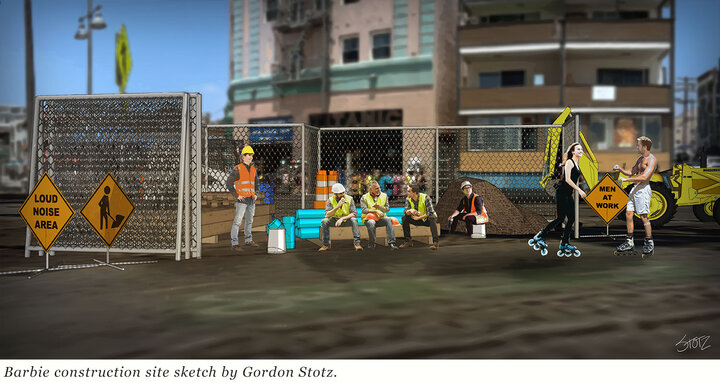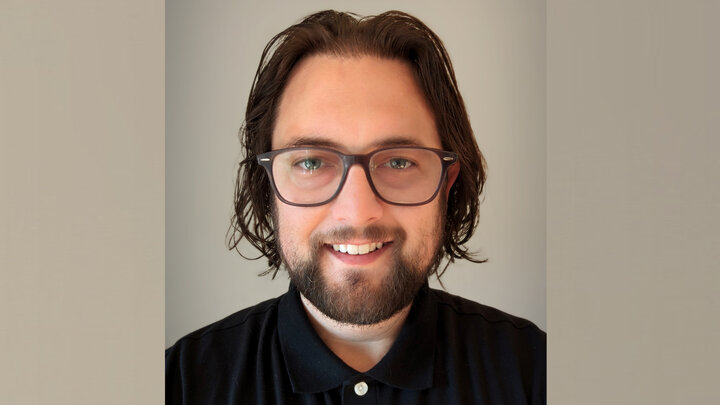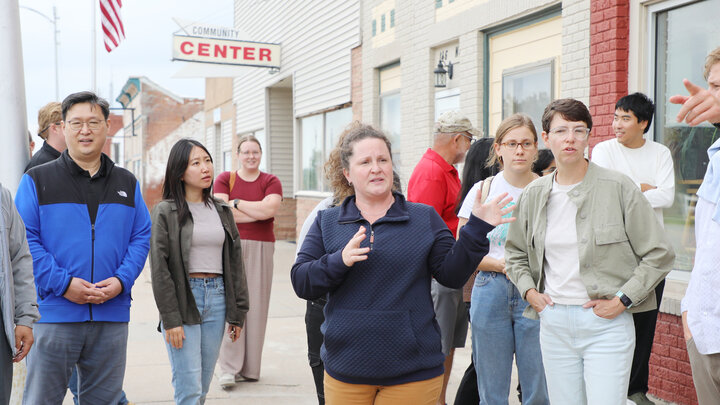What does Barbie the architect and Barbie the movie art director have in common? One might think, not a lot. However, there are quite a surprising number of design professionals that work on movie sets who either have architecture or interior design degrees. Master of Architecture alumnus, Gordon Stotz, class of 2012, happens to be one of those individuals who transitioned quite successfully to the film industry. In fact, Stotz just finished working on Warner Bros’ “Barbie” movie as an art director and has an impressive film resume filled with credits from all sorts of movies and productions. Stotz has worked with movie royalty, as it were, with legends such as film director and producer Steven Spielberg and all the top studios. Stotz most recently worked as the art director for “Joker: Folie à Deux" set to be released in the fall of 2024 and has been set designer for productions such as “The Lord of the Rings: the Rings of Power,” Amazon Studios; “The Fabelmans,” Universal Pictures; “Hollywood Stargirl,” Walt Disney Studios; and “No One Will Save You,” 20th Century Fox, to name a few. With a resume like that, one could definitely say Stotz has “arrived” in the business.
“When I got the job with “Guardians of the Galaxy,” as an art department assistant, that was sort of the big one that really propelled everything forward. It was that movie, plus getting into the Union with the production of “Hotel Artemis” that made all the difference. Since then, film work has been basically non-stop,” said Stotz.
Before Stotz changed from architect to film maker, the prospect of breaking into the film industry was a daunting one, as the film community is smaller than most people realize. Lucky for Stotz, he had a six-month plan.

In 2016, Stotz had been in the architecture profession for four years working with HDR Inc and Antunovich Associates at the time of his career transition. The idea of working in the film industry had always appealed to Stotz, but as a student, he thought it was too late to change career paths. However, the dream of working in film kept nagging at Stotz, so he decided to do some research regarding what it was like to work in the film industry and what he would need to make the career jump.
“I eventually met someone through a friend of a friend who was in the industry, who allowed me to just email her a ton of just ridiculous questions from what is a graphic designer, to what do art directors vs set designers do, to what do I need to do to make the jump?”
After months of research, Stotz and his wife at the time, came up with a six-month plan where they would move from DC to LA. His wife would pursue her master’s degree and Stotz’s job would be to find work in the film industry.
“We had this whole plan where I would just make myself available. I would not take a job unless it was a film job,” said Stotz. “So we agreed, I'll go 6 months and if I can't do it in 6 months, then I need to get a real job, otherwise we'll run out of time and money because LA is very expensive.”
Low and behold, at month five, Stotz landed his breakthrough job with “Guardians of the Galaxy.”
Getting his lucky break was probably the toughest part of the career transition. As Stotz explains, the skill sets of an architect or interior designer are very similar and translate well into the film world. It’s about understanding space, being able to draw and sketch up things quickly, and make realistic models.
“I look at film credits and see the parallel positions the architecture field has. The architects and interior designers, those are the art department in film. The two industries, as far as my work is concerned, aren’t very different at all. As a set designer you're kind of the architect when you are drafting and drawing the sets. When I work on designing sets, I’m also drawing and making 3D models on the computer, so those skill sets are the same, and I use many of the same software programs.”
Stotz’s advice for any architecture student considering a career in a film’s art department might be surprising to some career counselors.
“You don’t need to change your major or go to a film school,” said Stotz. “If you're already an architecture student, and you're invested in that, the things you're going to learn in architecture are just as important as anything you're going to learn in film school. If I had it to do all over again, I would still take the same path. I would still suggest a Master of Architecture degree but maybe couple it with a film minor or perhaps take a production design class. Plus, the UNL professors were great especially Peter Hinds and Rumiko Handa. It was a great place to study.”
However, Stotz said he wouldn’t recommend looking for film work directly after graduation.
“I would first work in architecture or interior design for a few years first. It helps getting experience in the real world as an architect before you transition into film.”
Stotz believes his degree in architecture helped him design sets with more accuracy that were more believable. The degree also enhanced his designs with greater detail and gave him the knowledge of when and why he needed certain architectural elements added to a set.
Perhaps asking Stotz to name his favorite movies he’s worked on is like asking someone to name their favorite child. Different movies have different affinities for Stotz.
“The movies are all from specific times of my life and they hold different meanings. “Hotel Artemis” is a big one for me. It’s where I met a very special group of coworkers who became friends, and we still get together to this day. That's also the one where I got into the Union, which was a big deal.”

Another really special production for Stotz is “The Lord of the Rings: the Rings of Power,” because it not only was his first movie as a set designer but also his dream job.
“I was once asked by my roommate, what would be your dream job, and I replied, “Lord of the Rings” and a year or two later I get a text message asking me if I wanted to go to New Zealand and work on “Lord of the Rings.” It was amazing!”
One might wonder, when watching “The Lord of the Rings: the Rings of Power,” what parts was Stotz responsible for, knowing a whole team worked on the film. Well not to give away the whole show, but Stotz said he would point out a few highlights. For example, one can see Stotz’s work in Bronwyn’s wood cabin that he helped design as a set designer and was part of the crew who created the village’s on-site buildings. He also worked heavily on dwarf Durin IV's house.
“That project was really exciting, because we had to work in various scales, at different sizes. So, you had to build things at different sizes for humans and for dwarves. Plus, when it came to detailing it, I got to design things like the dual doors and columns and the forge as well. I detailed out a few of those things which was sort of like a dream come true.”
Of course, if one is pining to see “Barbie,” be sure to pay close attention to the spinning Barbies in one of the opening shots. Apparently, even though that animation looks seamless, lots of trial and error were involved in that shot according to Stotz.
So, this weekend perhaps grab some popcorn and pay extra attention to the movie, one just might see a College of Architecture alum in the credits or maybe more.




